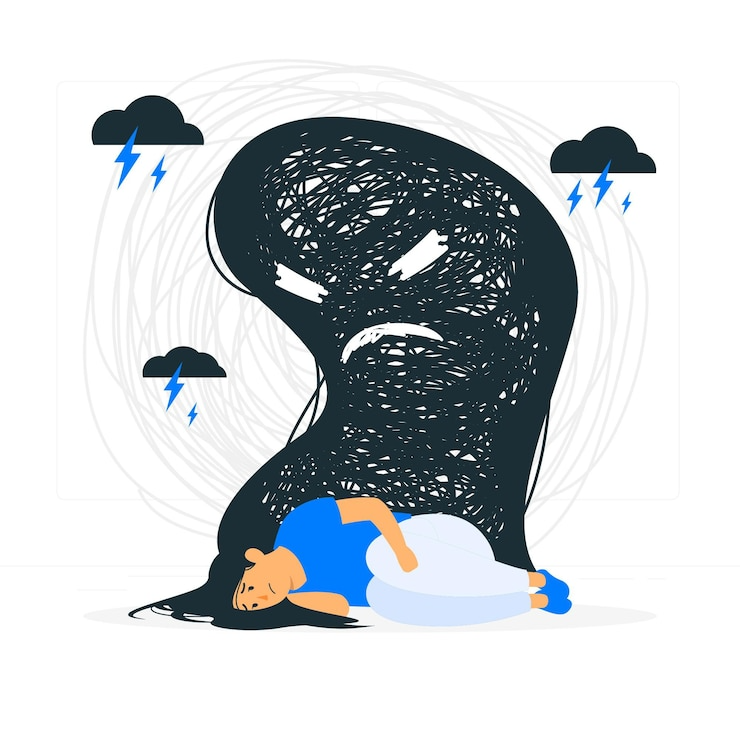Understanding Bipolar Disorder: Unraveling The Complexities Of The Mood Spectrum
Bipolar disorder, formerly known as manic-depressive illness, is a mental health condition characterized by extreme mood swings, fluctuating between episodes of mania and depression.
Table of Contents
This disorder affects millions of people worldwide, impacting their daily lives, relationships, and overall well-being. This article delves into the intricacies of bipolar disorder, exploring its symptoms, causes, diagnosis, and treatment options.
I. The Spectrum of Bipolar Disorder:
Bipolar disorder exists on a spectrum, encompassing various manifestations and degrees of severity. The two primary phases are manic and depressive episodes.
- Manic Episodes: Mania represents the elevated end of the mood spectrum. During manic episodes, individuals may experience heightened energy levels, increased irritability, impulsivity, and a reduced need for sleep. They might engage in risky behaviors, such as excessive spending, reckless driving, or substance abuse. While mania can lead to increased productivity and creativity in some cases, it can also have detrimental consequences on personal and professional relationships.
- Depressive Episodes: On the other end of the spectrum lie depressive episodes, characterized by overwhelming sadness, fatigue, loss of interest or pleasure in activities, and changes in sleep and appetite. Individuals may struggle with feelings of worthlessness and hopelessness, making daily functioning challenging. Suicidal thoughts may also emerge during severe depressive episodes, underscoring the gravity of this aspect of bipolar disorder.
II. Causes of Bipolar Disorder:
The exact cause of bipolar disorder remains elusive, with a combination of genetic, biological, and environmental factors contributing to its development.
- Genetic Factors: Research suggests a strong genetic component in bipolar disorder. Individuals with a family history of the condition are at a higher risk of developing it themselves. Specific genes associated with neurotransmitter regulation and brain function may contribute to the vulnerability to this disorder.
- Neurobiological Factors: Imbalances in neurotransmitters, such as dopamine, serotonin, and norepinephrine, play a crucial role in this disorder. These chemical messengers are essential for communication between brain cells, and disruptions in their functioning can lead to mood dysregulation.
- Environmental Triggers: Stressful life events, trauma, and major life changes can trigger the onset of the disorder in susceptible individuals. Substance abuse, particularly stimulants like cocaine or amphetamines, may also precipitate manic episodes.
III. Diagnosis and Types of Bipolar Disorder:
Diagnosing the disorder involves a comprehensive assessment of symptoms, medical history, and family history. The condition is classified into several types based on the nature and intensity of mood episodes.
- Bipolar I Disorder: Characterized by at least one manic episode, which may be followed by hypomanic or depressive episodes.
- Bipolar II Disorder: Involves recurring depressive and hypomanic episodes but not full-blown mania.
- Cyclothymic Disorder: A milder form of this disorder characterized by numerous periods of hypomanic and depressive symptoms lasting for at least two years.
IV. Treatment Approaches:
Managing this disorder often requires a combination of medication, psychotherapy, and lifestyle adjustments.
- Medication: Mood stabilizers, antipsychotics, and antidepressants are commonly prescribed to stabilize mood swings and alleviate symptoms. Close monitoring and adjustments to medication may be necessary over time.
- Psychotherapy: Cognitive-behavioral therapy (CBT), psychoeducation, and interpersonal therapy can help individuals with bipolar disorder understand and manage their symptoms. Psychotherapy is valuable for addressing the impact of the disorder on relationships and daily functioning.
- Lifestyle Management: Establishing a regular sleep schedule, adopting stress-reduction techniques, and avoiding substance abuse are crucial components of managing this disorder. Maintaining a healthy lifestyle, including regular exercise and a balanced diet, can also contribute to overall well-being.
Conclusion:
Bipolar disorder is a complex and challenging mental health condition that requires a comprehensive and individualized approach to treatment. With advancements in research and increased awareness, there is hope for better understanding, early intervention, and improved quality of life for individuals living with It.
By fostering a supportive and empathetic environment, society can contribute to breaking the stigma associated with mental health disorders and promoting holistic well-being

